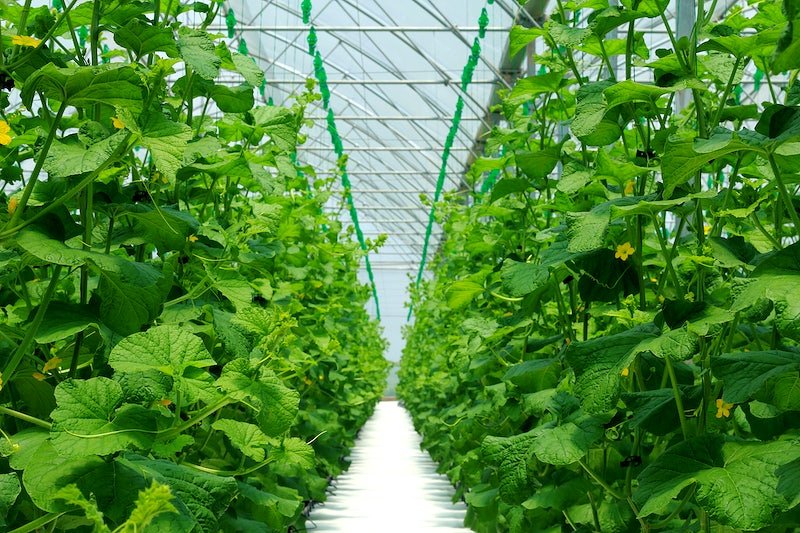Beyond Ag Tech Food Fixes: To Transform the Food System Successfully, We’ll Need to Dig Deeper
From the Edible Planet Regenerative Retreat in Perugia, Italy (gathering food systems leaders from around the globe), to Verge 2022 (convening climate tech professionals in San Jose, CA), the Land Core team has had the opportunity to participate in a number of recent events and dialogues on “transforming food systems”. We’re grateful to see this topic on everyone’s minds in the midst of a global hunger crisis, drought (including terrible underreported dust storms across the US), and a pandemic that has revealed major cracks in food supply chains.
What these gatherings have exposed (and are in fact designed to address to some extent), is that most of us in the space of food system reform, who are trying in good faith to address the mounting number of crises we are facing, are often working in deep silos. We were reminded that not everyone trying to change the food system is taking into account the broader context.
In particular, we’ve heard a lot of talk about technology-based innovations - plant-based protein alternatives, cultivated meat (grown in labs from cells), controlled-environment agriculture operations, and so many others - proliferating the market, exciting the press and the public, and benefiting from a seemingly endless stream of venture capital.
However, when looking at these ag-tech solutions, it is important that we take a step back. We need to be clear-eyed that many of these new business ventures are not without serious collateral impacts, and nearly all are missing the fundamental opportunity to build a truly resilient, diversified, independent food system.
Food companies that rely on highly complex (and fragile) global supply chains and/or patented highly technical processes, tend to move increasingly towards consolidation to tackle the complexities inherent in those systems. This results in further tying our food system, and more importantly, our food sovereignty (the right to grow and control our own food), to an ever-shrinking number of private companies.
In addition, nearly all of the ag-tech based solutions rely heavily on energy-intensive inputs (with no natural on-farm fertility solutions available to them), making them beholden to market disruptions and other shocks, perpetuating some of the worst problems that have surfaced over the last few years with both COVID and the fallout from the war in Ukraine.
So in many cases, what may seem on the surface like highly efficient models, are often in many ways the opposite of resilience.
Further, the idea that most tech-driven cultivation techniques are "green" or "environmentally responsible", is often true only when stacked against the dominant, conventional ag system. However, compared to soil building solutions, which have the potential to be carbon negative, and restore natural resources (rather than just minimize negative impacts), we are truly missing the opportunity at hand.
From a sustainability lens, the fact is: it matters less what we eat, and more how it was grown or produced. Voting with our consumer and investment dollars for food that was grown from a soil health-building, ecosystem-restoring agricultural system - one teeming with beneficial organisms, wildlife and diversity, is a significantly less reductionist vision of progress…that also supports better farmer incomes, revived rural communities, cleaner waterways and airways, and even national security!
Just as it’s becoming abundantly clear that a soil-based initiative with a singular focus on carbon risks missing the many other ecosystem services and economic benefits inherent in building soil health, any new food product or business that only aims or claims to solve environmental or natural resource concerns, without looking at the whole system, is probably creating as many new issues as it is addressing. And this includes not just environmental, but also human and societal concerns - farmer livelihoods, the wellbeing of communities, and again, food sovereignty.
With food systems on the menu at COP27 in Egypt this week, it is essential that soil health, farmer resilience, and food sovereignty have as prominent a place in these conversations as flashier tech-driven solutions do. Although some meaningful environmental reductions can be achievable through thoughtful tech solutions, only soil-based regenerative agriculture has the potential to be emissions-negative (through soil carbon sequestration, achieved by building soil health). If the countries at COP27 truly want to tackle the one-third of emissions that come from the agriculture sector globally, remembering that our agricultural soils are the largest terrestrial carbon sink on the planet will serve them well.
We must send a clear message to investors, policymakers, and global leaders alike that our work is not just about reducing harm…it’s about finding economically viable ways of healing our land and water systems, reversing damage done, and achieving positive benefits. Beneath our feet is an incredibly complex and wondersome “technology” that has already gone through millions of years of development and iteration: our soil.
We believe in all-of-the-above solutions, but at the end of the day, we want to make sure that we are also investing in holistic, resilient systems. New technologies should support, not supplant, farmers in leading the way.
We should not be inadvertently perpetuating dependence on synthetic inputs, global energy markets, and fragile supply chains, and food production controlled by an ever-consolidating handful of corporations…all while undermining and underfunding the work that will still need to be done to restore what we have damaged by half a century of reductionist thinking.
Together, we can empower farmers to shift from the consolidated, conventional ag systems of the past half century, towards more resilient, independent, profitable soil health-centered systems, that not only reward them for producing healthy food, but also value the ecosystem restoration and thriving human communities that come along with truly regenerative food and fiber production models.

